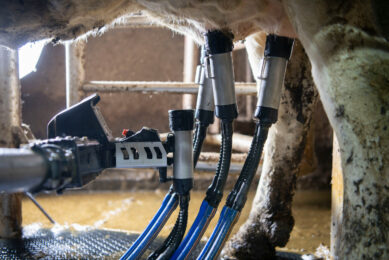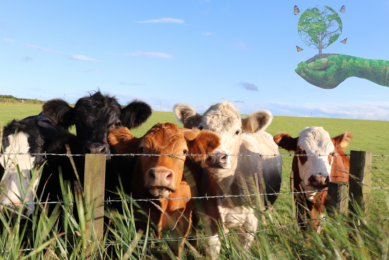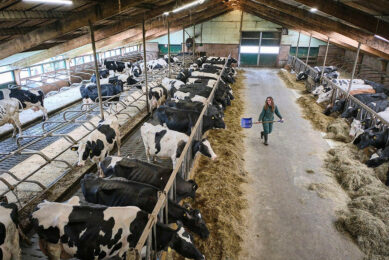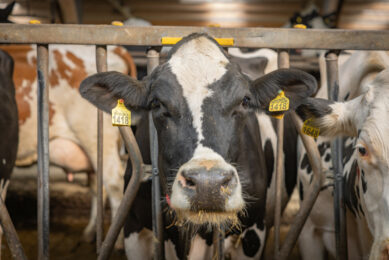Global standard for determining ADF and lignin
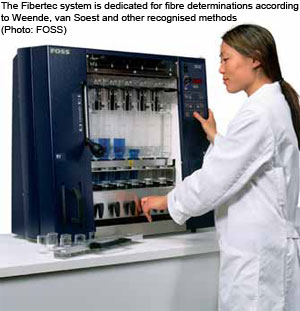
Today the requirements for a well balanced compound feed have become increasingly higher. Desirable fibre content in the feed yields better breeding and higher cost efficiency, but requires more analysis and quality control.
For monogastric animals a proper proportioning of fibre fractions increases the utilisation of the compounded feed. For ruminants, fibre is an important part of the metabolism in the rumen. It is a determining factor for the hydrolysis of all nutritional ingredients in the feed.
For a number of years, livestock nutritionists have been using Acid Detergent Fibre (ADF) and Neutral Detergent Fibre (NDF) as indicators of dietary energy and intake, especially for ruminant rations.
As a result these fibre fractions have replaced crude fibre (CF) in ration formulations in many parts of the world. Today ADF and NDF values are frequently used to estimate the amount of forage that can be digested by animals; the total digestible nutrients and other energy values, as well as the relative feed value an index used to allocate the correct forage to specific animal performance. Also to price hay and to assess forage management, harvest and storage skills.
The detergent system of feed analysis (Figure 1) was developed by Peter Van Soest at the United States Department of Agriculture in the 1960s and continues to be one of the most important sets of feed assays in ruminant nutrition but also, increasingly, in non-ruminant research.
The concept behind detergent fibre analysis is that plant cells can be divided into less digestible cell walls (comprising hemicellulose, cellulose and lignin) and mostly digestible cell contents (comprising starch and sugars). These two components can be separated by using two detergents; a neutral detergent and an acid detergent. Neutral Detergent Fibre is a good indicator of bulk and thus feed intake.
Acid detergent fibre is a good indicator of digestibility and thus energy intake.
A harmonised global standardisation method for the determination of neutral detergent fibres has recently been published by the Association of Analytical Communities (AOAC) and jointly by the International Organisation for Standardisation (ISO) and the European Committee for Standardisation (CEN).
Based on the AOAC Official Method 973.18 “Fibre (Acid detergent) and lignin (H2SO4) in animal feed”, ISO and CEN in 2008 also issued a fully validated standard entitled “Animal feeding stuffs – Determination of acid detergent fibre content (ADF) and lignin (ADL)”.
Since the 1970’s, Foss has been pioneering the determination of fibre fractions using Tecator Fibertec™ systems. This article summarises the results of an international validation study for the EN ISO 13906:2008 standard, performed by Foss.
Inter-laboratory study
Samples of sawdust, wheat, cattle feed, soy meal, clover silage and grass silage were selected for the study. Participants received blind duplicates of the samples numbered 1-12, without identifying the type of sample.
Out of the 22 participating labs, four used conventional or other equipment and 18 used the Foss Fibertec system. Results of the statistical evaluation for ADF can be seen in Table 1.
The performance data, in the form of relative errors (coefficient of variation of repeatability and reproducibility) is better than 10%, except for Sample 2. These data are comparable with those obtained in the NDF method.
The results of the statistical evaluation for the determination of acid detergent lignin are shown in Table 2. Based on the obtained results it is recommended to report values lower than 1.5 % as <1.5%.
The new standard EN ISO 13906:2008 Animal feeding stuffs – Determination of acid detergent fibre (ADF) and acid detergent lignin (ADL) contents, describes the use of a refluxing apparatus and gives the Foss Fibertec™ system as a suitable option. Fibertec was used by 18 of 22 laboratories taking part in the collaborative study. A globally accepted standard for amylase treated Neutral Detergent Fibre (aNDF) has already been issued – ISO 16472:2006 and AOAC 2002.04. This standard also states the Fibertec system as a valid option. The advantage of the Fibertec apparatus compared to the manual (refluxing in beakers) can be summed up as follows:
|
Conclusions
As the EN ISO 13906:2008 method is based on the AOAC Official Method 973.18, a globally harmonised, validated protocol for the determination of Acid Detergent Fibre (ADF) and Lignin (ADL) has now become available. This is of importance for the global trade of raw materials and compound feed, international research, the ISO 17025 accreditation of laboratories using the Foss Fibertec systems and for the development of NIR prediction models, but – more importantly – it enables official bodies to require fibre guarantees on livestock feed labels (depending on species) based on globally harmonised methods. For ruminant feed labels: ADF and NDF guarantees.For non-ruminant feed labels: CF guarantees and for both ruminant and non-ruminant feed labels: ADF, NDF, and CF guarantees.
The full version of the Global Standard ADF article can be read in the Jan/Feb issue of The Journal of AOAC.




